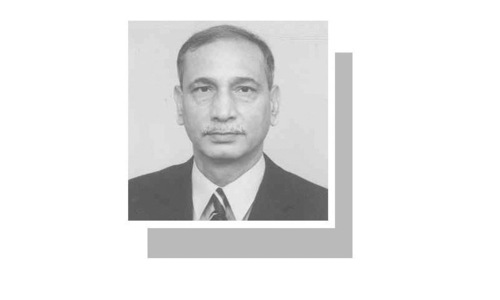
"The specially ‘tailored’ works in ‘Patterns’ set out to challenge Orientalising stereotypes about South Asian identity,” writes curator and art historian Dr Zehra Jumabhoy in the catalogue essay, The Threads of Time: Weaving Pasts and Presents in Contemporary Art from Pakistan.
What stereotypes are these and why must they be dismantled? This challenging line of inquiry is investigated by five artists, either born and living in Pakistan, or having a dual nationality — Bushra Waqas Khan, David Alesworth, Adeela Suleman, Liaqat Rasul and Ruby Chistie — in the exhibition titled ‘Patterns of the Past: Weaving Heritage in ‘Pakistani’ Art.’ It was held at the Grosvenor Gallery in London in collaboration with Karachi’s Canvas Gallery.
The exhibition occurs at a fortunate time, within the formation of a new art discourse. Presently, gaps within the art historical cannon are being enthusiastically addressed, as South Asian art and craft legacies are being widely re-explored by scholars and artists.
Additionally, Jumabhoy’s essay casts a wider net, whose entangled mesh covers more than the neo- and contemporary miniature genres associated with Pakistan in the global art scene. The latter are often isolated from other contemporary styles and art practices that have emerged from South Asia, especially Pakistan, when highlighted in exhibitions. Thus, ‘Patterns’ aims to look at other facets of contemporary Pakistani art that are as fertile points of interests as other more popular art genres emerging from the country.
‘Patterns’ focuses on textiles and fabrics as mediums and subjects of its art, designed to stir the sight and intellect simultaneously.
An exhibition in London utilising textiles shakes up conventional ideas of South Asian identities and Pakistani contemporary art
The participating artists upset stereotypes associated with Pakistani art and heritage, highlight complicated colonial pasts and post-colonial truths, and address scattered notions of a South Asian identity.
The multiple folds of Bushra Waqas Khan’s Victorian-styled dresses, made out of fabrics such as silk, organza and net, use motifs and patterns from affidavit paper abundantly used for contracts and oaths in Pakistan. Using Victorian-styled dresses that were prevalent as the mode of fashion during the 19th century in Britain, Khan’s elegant dresses complicate our simple understanding of heritage.

When India was a British colony, British sensibilities of industrial and fine arts, systems of cataloguing artefacts, fashion, education and social practices inundated India, puncturing the prevalent native cultural aesthetics and systems of knowledge. Viewers are encouraged to ponder over their own national identity; the use of Pakistani oath paper motifs furthers this complication between the seemingly simple present and past. Further, Khan takes the processes of wrapping and weaving to explore the dichotomies existent between the colonial past and post-colonial current scenarios.
Artist and educator David Alesworth references the Linnaean Taxonomy, a scientific classification of plants, animals and minerals set up by Carl Linnaeus in the early 1700s, in his statement about his archival textile prints and embroideries on cotton satin. For Alesworth, the iconography of deep black roses and leaves is personal and autobiographical, that stitches time and memories of his family in the UK, their horticultural background and his determined engagement with Pakistan’s popular visual culture.
Adeela Suleman’s pop fabric tapestries, which borrow their subject matter from Hindu epics and Pahari paintings, are an extension of her critical engagement with visual representations of the aggressive indifference between different groups that have inhabited South Asia since eons.
Liaqat Rasul’s colourful collages — made with fabrics, paper receipts, tissue, cardboards and similar discarded items — reflect his interests in fashion, travel and everyday stories. Ruby Chishti continues to experiment with fabrics in abstracted works that explore women’s identity, Indo-Islamic aesthetic patterns and human experiences.
More than tackling historical issues, ‘Patterns’ is about addressing the idea behind Pakistani contemporary art, which is often comprehended, in a limited manner, as a standalone history of religious and traditional identities.
In truth, Pakistani art is a hotpot of multiple mediums, styles, subjects and networks that often intermingle with multiple heritages, a notion that is successfully served by the artworks in this exhibition.
In collaboration with Canvas Gallery, ‘Patterns of the Past: Weaving Heritage in ‘Pakistani’ Art’ was held at Grosvenor Gallery in London between September 11 until October 1, 2021
Published in Dawn, EOS, October 10th, 2021
















































Dear visitor, the comments section is undergoing an overhaul and will return soon.